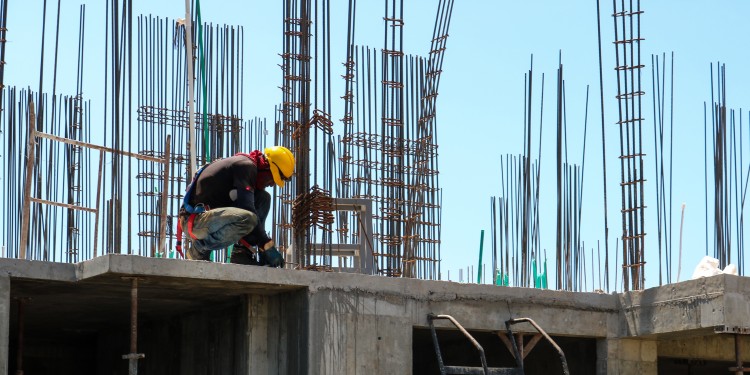
Flourishing trade in workers
They have jobs as harvest workers in Spain, on building sites in Malaysia or as cleaners in Saudi-Arabia – mostly under precarious living and working conditions and earning low wages. Nevertheless, for most migrant workers it is the only possibility they have to secure a livelihood. At the same time, economic development in many places would be impossible without low-paid foreign workers. In her dissertation at the Institute of Geography, Dr. Hannah Uprety (35) took the example of Nepal to examine the mechanisms and structures behind such forms of labour migration. The conclusion she came to was that in the marketing of Nepalese labour, it is not only the current logic of globalisation that plays a role, but also historical power constellations and colonial infrastructures.
The discussion surrounding migrant workers in Qatar shows how conditions in the destination countries are often catastrophic. Headlines such as “15,000 people have died so that we can cheer our team’s goals” or “the shameful World Cup” draw attention to the situation. Hannah Uprety, on the other hand, took a look at the structures in the workers’ home country. “In Nepal, most of the people do not become migrant workers by chance,” she says. “Instead, there is a veritable migration industry which enables labour to be exported.” This includes recruitment and placement agencies, qualification programmes and travel agents, as well as the existence of basic legal and political conditions.

Prof. Thomas Apolte, an economist at the University of Münster, points out that “labour migration needn’t be a bad thing per se.” – as long as it is a voluntary activity. “The foreign currency earned makes it possible to import things into the home country which may be more important for domestic needs than what the migrant workers can produce at home themselves under the given economic structures.” Two extremes characterise the reporting undertaken so far on Nepalese labour migration: the one side sees it as a modern form of slavery, the other as a machinery for helping the country to develop. “Hannah Uprety’s research does away with this black-and-white view of things and shows the nuances in between,” says Prof. Paul Reuber from the Institute of Geography, who supervised Uprety’s dissertation. “There is a fine line,” he says, “between external determination and self-determination – in other words, whether someone is somehow ‘forced’ to go abroad as a result of various conditions in their social surroundings, or whether they (supposedly) make this decision voluntarily – and separating the two is almost impossible. For the first time, on the basis of intensive fieldwork, the dissertation describes the complex conditions surrounding Nepalese labour migration, and it does so in a nuanced way.”
The workers who return home have learned a lot. They can use this know-how in their home country and pass on what they have learned.
In Nepal itself, migrant workers have a very good reputation because a lot of people dream of prospects abroad. People who grow up in this system are prepared at an early age for being exported as ‘commodities’. “People learn to adopt a subordinate role in selection processes and courses,” says Uprety. “Step by step, they adopt a new identity as a migrant, thus enabling them to be well integrated into the globalised market.”
Uprety sees an opportunity for the small Himalayan country between China and India if it harnesses the gains made through migration. “The workers who return home have learned a lot,” she says. “They can use this know-how in their home country and pass on what they have learned.” As a result, they can more actively use the situation for themselves – because even now most of them are not passive ‘victims’, despite adverse circumstances.
Hannah Uprety
Hannah Uprety took a B.A. in South Asian Studies at the University of Heidelberg and an M.A. in Human Geography at the University of Münster, where she also gained her PhD in 2021. For her research in the field of Nepalese labour migration she received the Münster University Dissertation Prize 2021, as well as the Dissertation Prize (3rd place) awarded by the Britain-Nepal Academic Council. She is currently engaged in neighbourhood work for the Internationaler Bund.
Hannah Uprety’s dissertation is due to be published in August 2022 by the publisher Transcript Verlag.
Author: Kathrin Kottke
